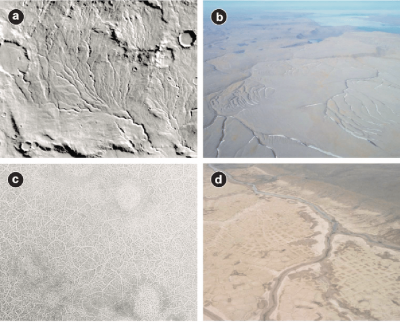
A branching network of grooves that look like the river drainage basins on the Earth — who would have thought we would see them on Mars? These are the valley networks, found mainly in the southern highlands region of Mars.
Martian valley networks are typically made up of narrow channels that are a couple of hundred kilometres long, one to five kilometres wide, and 50 to 200 metres deep, even though some may be longer. Like that of a river on the Earth, their cross sections are initially V-shaped, and gradually change to a U-shaped or flat-bottomed form towards the lower ends of the channel. Some of them also seem to carry evidence of flowing water.
The networks are made up of small channels that merge into bigger tributaries over and over until they join to form a single stream. This gives a valley network the appearance of the roots of a tree!
Scientists used to say that the Martian valley networks may have formed billions of years ago when liquid water used to flow across the Martian surface. But some argued that they may also be the products of tectonic activity, or other types of erosion, such as by wind, glaciers, or lava.
Most recent reports support the theory that they were carved by water seeping under glaciers that once used to cover the southern highlands!
Picture Credit : Google




